2025 Solar Lighting Guide: 5 Key Specs to Avoid Mistakes
Solar lighting is revolutionizing outdoor illumination, offering energy-efficient, eco-friendly solutions for homes and gardens. Whether you’re considering LED solar powered lighting for ambiance, solar path lights for safe navigation, or small solar lights for compact spaces, choosing the right product requires understanding key performance metrics. This 2025 guide breaks down five critical parameters—solar panel efficiency, battery capacity, LED brightness, waterproof rating, and sensing features—to help you make informed decisions. With professional insights and practical tips, you’ll master solar lighting selection in no time.
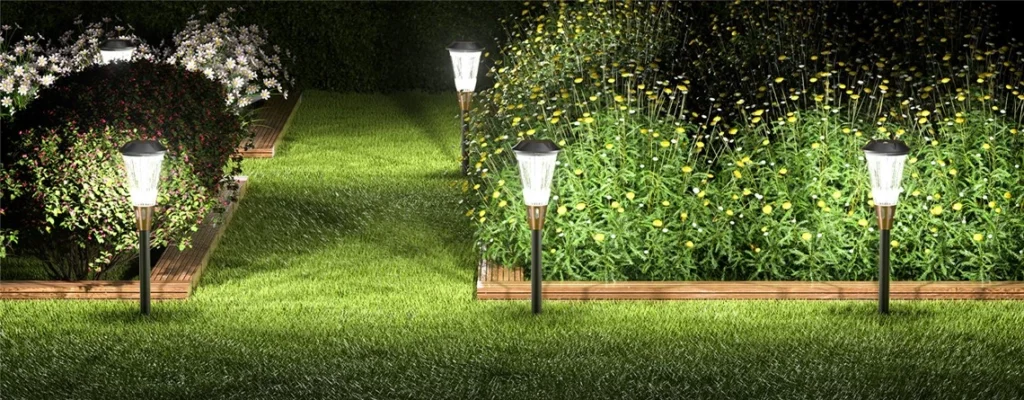
Why Choose LED Solar Powered Lighting?
LED solar powered lighting combines the efficiency of LED technology with the sustainability of solar energy. These lights harness sunlight to charge batteries during the day, powering LEDs at night without relying on grid electricity. This eliminates energy costs and complex wiring, making them ideal for gardens, pathways, and small spaces. By focusing on key specs, you can ensure your LED solar powered lighting delivers optimal performance, durability, and aesthetics.
Key Parameter 1: Solar Panel Conversion Efficiency
The solar panel is the heart of any LED solar powered lighting system, converting sunlight into electricity. Conversion efficiency, measured as a percentage, determines how effectively the panel generates power. Two main types dominate:
- Monocrystalline Silicon: Offers 15–22% efficiency, ideal for solar path lights due to its compact size and high output in limited sunlight.
- Polycrystalline Silicon: Slightly lower at 13–16% efficiency, but more affordable, suitable for small solar lights where budget is a concern.
For 2025, prioritize monocrystalline panels for better performance, especially in cloudy climates. Check the panel’s wattage (e.g., 2W–5W for solar path lights) to ensure sufficient charging capacity.
Key Parameter 2: Battery Capacity for Extended Runtime
Battery capacity, measured in ampere-hours (Ah) or watt-hours (Wh), dictates how long your lights stay on. For LED solar powered lighting, batteries typically range from 1Ah to 5Ah:
- Small solar lights: 1–2Ah batteries suffice for 6–8 hours of low-intensity light.
- Solar path lights: 2–4Ah batteries support brighter, longer-lasting illumination (8–12 hours).
- Larger systems for patios may use 5Ah or more for extended runtime.
Lithium-ion batteries are preferred for their longevity (2–3 years) and efficiency over NiMH. Always check the battery’s Wh rating (e.g., 3.7V × 2000mAh = 7.4Wh) to estimate runtime, especially for solar path lights used along walkways.
Key Parameter 3: LED Brightness (Lumens)
Brightness, measured in lumens (lm), determines how well LED solar powered lighting illuminates your space. Different applications require different lumen levels:
- Small solar lights: 10–100lm for decorative accents, like garden borders.
- Solar path lights: 100–300lm for clear pathway visibility.
- Patio or security lighting: 300–1000lm for broader coverage and ambiance.
For example, a solar path light with 200lm is ideal for guiding steps, while small solar lights with 50lm add subtle charm to flowerbeds. Check the LED’s color temperature (e.g., 3000K for warm light, 6000K for cool) to match your aesthetic preferences.
Key Parameter 4: Waterproof Rating for Durability
Outdoor lights face rain, snow, and dust, so a high waterproof rating is crucial. The Ingress Protection (IP) rating indicates durability:
- IP65: Protects against water jets and dust, ideal for solar path lights exposed to heavy rain.
- IP67: Fully dust-tight and withstands temporary submersion, perfect for small solar lights in flood-prone areas.
- IP68: Submersible, rare but excellent for extreme conditions.
For most LED solar powered lighting, IP65 or higher ensures year-round reliability. Always verify the rating, as subpar seals can lead to corrosion or failure in harsh weather.
Key Parameter 5: Sensing Features for Smart Operation
Modern LED solar powered lighting often includes sensors for efficiency and convenience. Two types are common:
- Photocell Sensors: Automatically turn lights on at dusk and off at dawn, standard in solar path lights and small solar lights.
- Motion Sensors: Activate lights when movement is detected, ideal for security or energy saving in LED solar powered lighting near doorways.
For example, a solar path light with a motion sensor (10–15m range) saves battery by only illuminating when someone approaches. Look for adjustable sensitivity to avoid false triggers from pets or wind.
Comparing Solar Lighting to Traditional Options
Unlike grid-powered lights, LED solar powered lighting offers distinct advantages:
- Energy Savings: Zero electricity costs, as sunlight is free.
- Easy Installation: No wiring needed—stake solar path lights into the ground or mount small solar lights on walls.
- Eco-Friendly: Reduces carbon footprint compared to fossil-fuel-powered grid lights.
However, solar lights depend on sunlight availability, so proper placement in unshaded areas is critical. Traditional lights may offer consistent brightness but lack the sustainability and flexibility of LED solar powered lighting.
Choosing the Right Solar Path Lights
Solar path lights are designed to illuminate walkways, driveways, or garden paths, enhancing safety and aesthetics. When selecting, consider:
- Stake Design: Ensure sturdy stakes for easy ground insertion and stability.
- Height and Spacing: 12–24 inches tall, spaced 6–8 feet apart for even lighting.
- Brightness: 100–300lm for clear visibility without glare.
For example, a set of solar path lights with 200lm and IP65 rating ensures safe navigation along a curved garden path, even in rainy conditions.
Maximizing Small Solar Lights for Compact Spaces
Small solar lights are perfect for tight spaces like balconies, flowerbeds, or staircases. Their compact design doesn’t compromise functionality:
- Versatile Mounting: Options include stakes, clips, or adhesive for walls and fences.
- Decorative Appeal: Available in string, lantern, or spot styles for creative accents.
- Low Power Needs: 10–50lm and 1–2Ah batteries suit low-intensity tasks.
For instance, small solar lights can outline a patio table or highlight potted plants, adding charm without clutter.
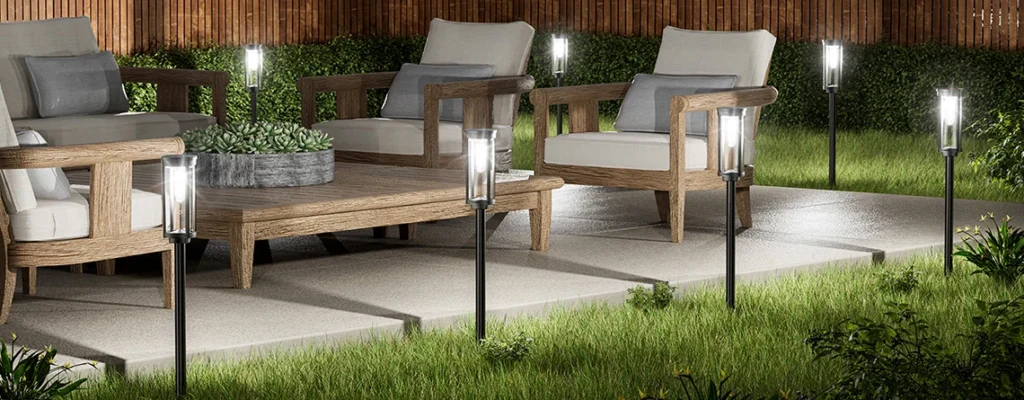
Installation and Maintenance Tips
To maximize the performance of LED solar powered lighting, follow these steps:
- Optimal Placement: Position panels in direct sunlight, avoiding shade from trees or buildings.
- Regular Cleaning: Wipe solar panels monthly to remove dust, ensuring efficient charging.
- Battery Checks: Replace batteries every 1–2 years if runtime decreases.
- Seasonal Adjustments: Tilt panels slightly in winter to capture low-angle sunlight.
For solar path lights, ensure stakes are firmly inserted to withstand wind. For small solar lights, check mounting stability to prevent falls.
2025 Innovations in Solar Lighting
The solar lighting industry is evolving rapidly. Here are new features to watch for in 2025:
- Smart Connectivity: Some LED solar powered lighting now integrates with apps for remote brightness and timer control.
- Advanced Sensors: Dual-mode sensors combine motion and light detection for smarter energy use.
- Enhanced Materials: UV-resistant plastics and stainless steel improve durability in solar path lights and small solar lights.
These advancements make solar lights more reliable and user-friendly, catering to diverse outdoor needs.
Common Mistakes to Avoid
When shopping for LED solar powered lighting, steer clear of these pitfalls:
- Ignoring Efficiency: Low-efficiency polycrystalline panels may underperform in cloudy regions.
- Overlooking IP Rating: Choosing IP44 or lower risks water damage in heavy rain.
- Focusing Only on Price: Cheap small solar lights may have weak batteries or dim LEDs, reducing lifespan.
Always cross-check specs like lumens, battery capacity, and IP rating to ensure value for money.
Conclusion: Make the Right Choice for 2025
Selecting the perfect LED solar powered lighting, solar path lights, or small solar lights doesn’t have to be daunting. By focusing on solar panel efficiency, battery capacity, LED brightness, waterproof rating, and sensing features, you can find reliable, long-lasting solutions for your outdoor spaces. These lights offer unmatched energy savings, easy installation, and environmental benefits, making them a smart choice for modern homes.
Whether illuminating a pathway with solar path lights, decorating with small solar lights, or enhancing security with LED solar powered lighting, the right specs ensure performance and durability. Use this 2025 guide to shop confidently and transform your outdoor areas with sustainable, stylish lighting.



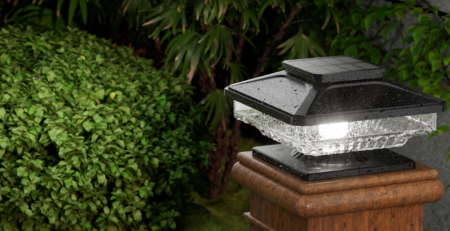


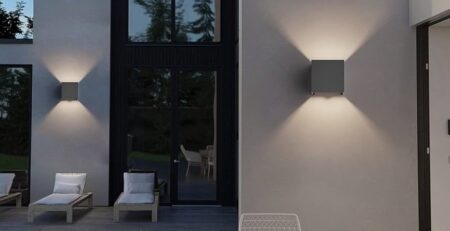
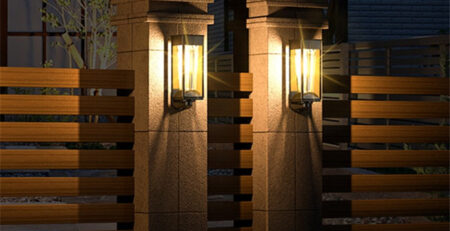
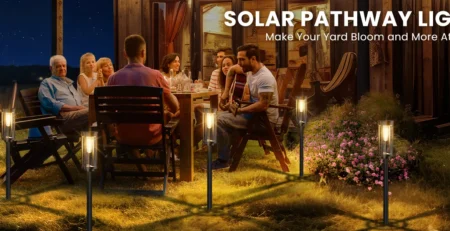
-1-450x231.webp)
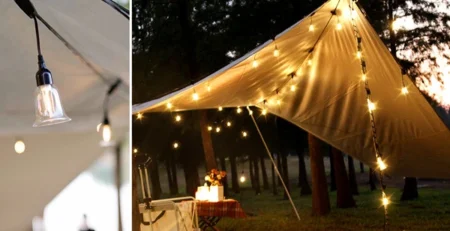
Leave a Reply